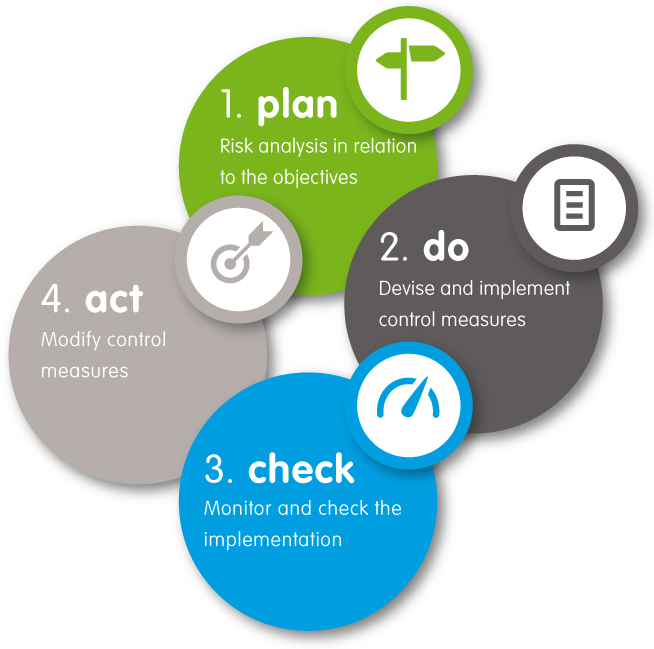Read our vision on integrated risk management, how you can implement it, and how Sophiq supports you in the process.
- They manage their organisation in an effective manner
- They are in control of their processes and projects
- They are in control of the risks in their business
Businesses have to be able to deal with unpredictable situations that do not feature in protocols or manuals, even though their hands are tied by formal regulations, protocols, and the allocation of powers.
Good management is therefore characterised by a focus on risks and risk management. No matter how difficult the current economic climate is, you cannot passively sit back and wait for things to get better. Now is the very time to stay relevant to the market and to respond to the changing behaviour of your customers. You have to be constantly alert to developments, and make considered judgements and decisions. However, decisions entail costs and have an impact on your business, so you prefer to exclude risks as much as possible.
Prompt measures
Risk management is intended to ensure that risks are identified and assessed promptly. The assessment may also allow for possible positive consequences of risks. Indeed, they could form a good reason not to avoid or reduce the risk in question, and that means making a careful choice.
Risk management must also ensure that timely measures are taken that can affect the chance of risks or their consequences occurring in a desired manner. Wherever possible, they should reduce the possibility of the risk materialising or ensure that the consequences associated with it are limited and absorbed.
Risks that threaten objectives
Categorising types of risk, based on the four types of organisational objectives, is a good way of differentiating the various levels at which risks can occur. This is all about the idea that risk control is a process that is aimed at obtaining a reasonable degree of certainty about achieving:
- Strategic objectives
Concern how the organisation as a whole can realise its goals - Operational objectives
Concern the effectiveness and efficiency of processes and the deployment of resources - Reporting objectives
Concern the reliability of information (financial and otherwise) provision - Compliance objectives
Aimed at compliance with relevant laws and regulations
Constant and reliable insights
It is very important that risks that impede the realisation of these objectives are discovered in time. The weight attached to a specific risk can best be based on the extent of the likelihood and the consequences of the risk.
Matters such as decision making, anticipating the need to prevent or contain unexpected situations, and having reliable and solid information that provides constant and reliable insights are essential in today’s risk management. After all, they can be used as the basis for setting priorities and can give an indication of new and unexpected developments.
Risk management with Sophiq:
Sophiq supports your approach towards risk at every step:

An organisation should manage its risks in the following way:
- Step 1. Describing and setting down the risks that threaten your objectives, as described above (= safeguarding)
- Step 2. Link the person responsible to the risks that have been set down (= workflow, continuous attention)
- Step 3. Description of scenarios (black swan events) that are more or less impossible to imagine or predict. Using the objective trees in Sophiq helps throw light on these risk scenarios.
Sophiq is a management instrument that explicitly highlights financial, technological and business risks, which makes it easier to control and manage them. Because they are visible, a strong awareness of risk is created – a proactive attitude to risks and a structured approach to reducing them, including relevant control measures in relation to making an inventory of them. This way, Sophiq assists organisations in focusing on areas with an increased level of risk and helps build bridges outside the confines of the organisation in order that risks can be controlled effectively. We refer here to both the reduction of risk and to the deliberate taking of risks in order to create value and make use of opportunities. This is exactly what Sophiq does: giving support when you have to take the right decisions, and managing your risks.